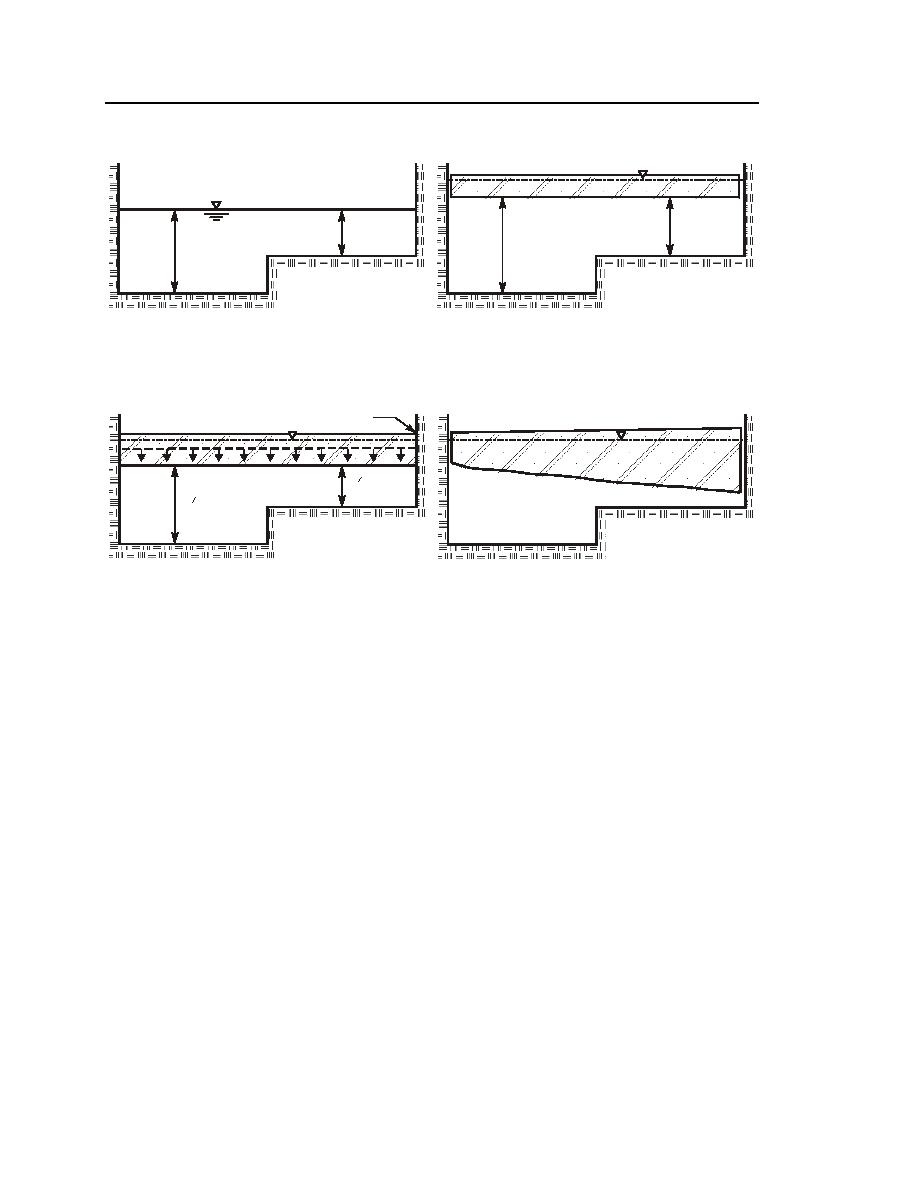
18
ERDC/CRREL TR-02-14
Y
Y
2i
Y
2o
Y
1i
1o
a. Open water.
b. Reduced flow when the cover is level and
free floating.
fixed
Y
2i
Y
1i
c. Increased flow when the cover is fixed
d. Increased flow when the cover is not
and thickening.
level.
Figure 9. Effect of ice cover on flow conveyance in lateral segments of a two-part, compound
channel.
covered. However, if the ice cover were fixed to the channel banks and thick-
ened, the reverse occurs: K1i/K2i > K1o/K2o (Fig. 9c), because the reduction in flow
depth represents a higher percentage of the overall depth for the shallower por-
tion. Under this condition, the cover squeezes or concentrates flow along a thal-
weg, where the flow is deeper. If the thalweg lies close to one side of a channel
(e.g., near the outer bank of a bend), such a concentration of flow may cause the
thalweg to shift position and then deepen. On the other hand, if the thalweg were
located more centrally in a channel, a fixed cover may deepen the thalweg in the
same position. Also, the cover, by reducing flow through the shallow portion,
may trigger further reductions in conveyance through the shallower portion by
promoting ice accumulation (frazil slush or pans) and/or bed sediment deposition
there. Additional flow concentration is possible if the cover is not uniformly
thick (Fig. 9d), if ice grounds on the channel bed, or if shorefast or accumulated
ice develops from one or both banks.



 Previous Page
Previous Page
